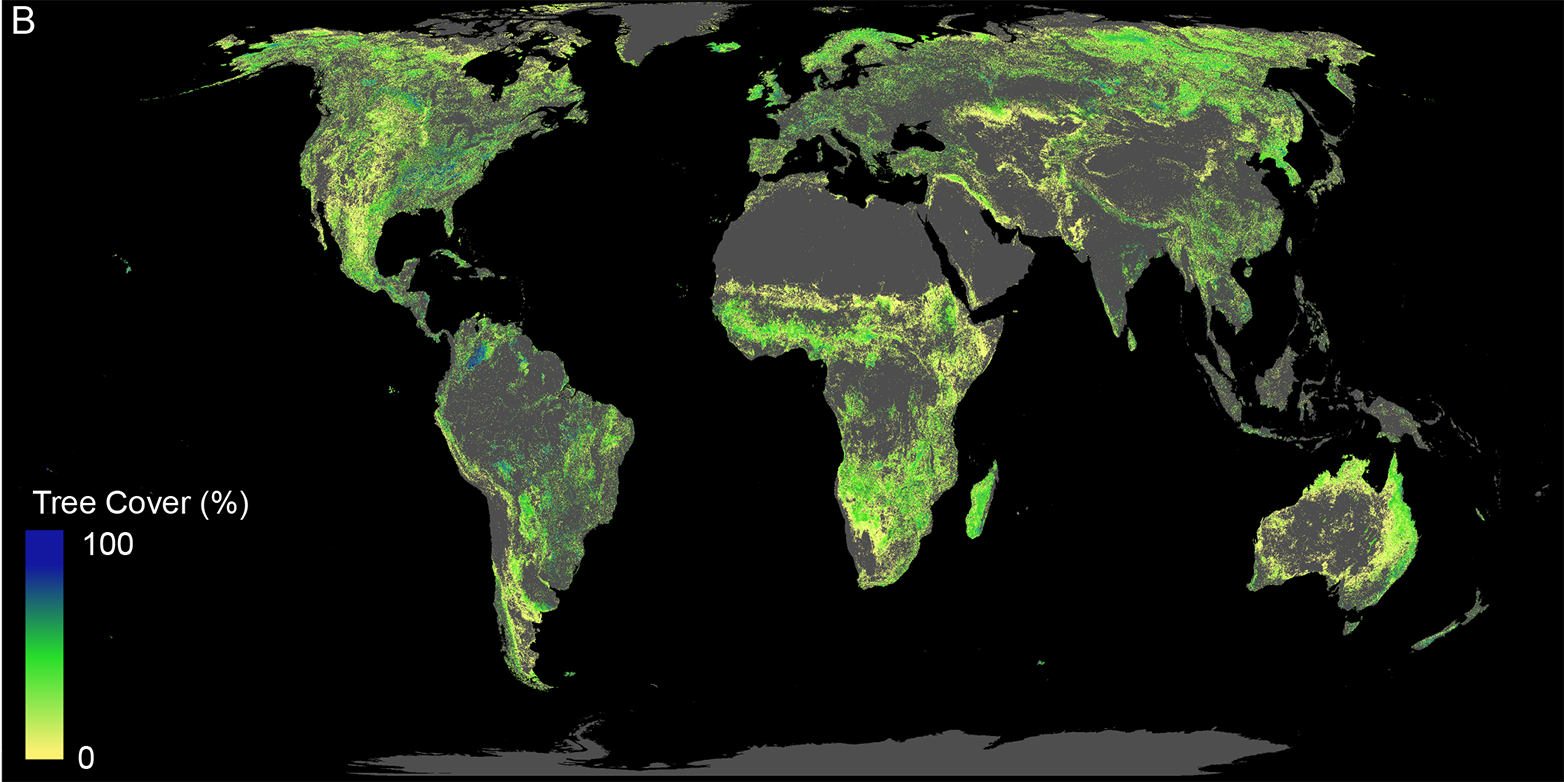How trees could help to save the climate*
Around 0.9 billion hectares of land worldwide would be suitable for reforestation, which could ultimately capture two thirds of human-made carbon emissions. The Crowther Lab of ETH Zurich has published a study in the journal Science that shows this can be a powerful tool for drawing carbon from the atmosphere.*

The Crowther Lab at ETH Zurich investigates nature-based solutions to climate change. In their latest study the researchers showed for the first time where in the world new trees could grow and how much carbon they would store. Study lead author and postdoc at the Crowther Lab Jean-François Bastin explains: “One aspect was of particular importance to us as we did the calculations: we excluded cities or agricultural areas from the total restoration potential as these areas are needed for human life.”
Reforest an area the size of the USA
The researchers calculated that under the current climate conditions, Earth’s land could support 4.4 billion hectares of continuous tree cover. That is 1.6 billion more than the currently existing 2.8 billion hectares. Of these 1.6 billion hectares, 0.9 billion hectares fulfill the criterion of not being used by humans. This means that there is currently an area of the size of the US available for tree restoration. Once mature, these new forests could store 205 billion tonnes of carbon: about two thirds of the 300 billion tonnes of carbon that has been released into the atmosphere as a result of human activity since the Industrial Revolution.
According to Prof. Thomas Crowther, co-author of the study and founder of the Crowther Lab at ETH Zurich: “We all knew that restoring forests could play a part in tackling climate change, but we didn’t really know how big the impact would be. Our study shows that tree restoration can be a powerful tool for drawing carbon from the atmosphere.* But we must act quickly, as new forests will take decades to mature and achieve their full potential as a source of natural carbon storage.”

Russia best suited for reforestation
The study also shows which parts of the world are most suited to forest restoration. The greatest potential can be found in just six countries: Russia (151 million hectares); the US (103 million hectares); Canada (78.4 million hectares); Australia (58 million hectares); Brazil (49.7 million hectares); and China (40.2 million hectares).
Many current climate models are wrong in expecting climate change to increase global tree cover, the study warns. It finds that there is likely to be an increase in the area of northern boreal forests in regions such as Siberia, but tree cover there averages only 30 to 40 percent. These gains would be outweighed by the losses suffered in dense tropical forests, which typically have 90 to 100 percent tree cover.

*In the initial version of the media release, afforestation was described as "the best climate change solution available today" and the title as "could trees could save the climate". This statement and the titel was clarified on 17.10.2019.
Further information
The study by the Crowther Lab on the potential that reforestation offers to reduce CO2 published in the journal Science (5 July 2019) prompted four scientific comments and three letters which were published in the October 18th edition, together with two responses of the scientists in the Crowther Lab. The authors have since amended a statement in the abstract of their original publication.
Overview of the publications:
Bastin JF et al: external page The global tree restoration potential (amended abstract)
Veldman JW et al: external page Comment
Friedlingstein P et al: external page Comment
Lewis SL et al: external page Comment
Grainger A et al: external page Comment
Bastin JF et al: external page Response to comments
Luedeling E et al: (Letter) external page Forest restoration: Overlooked constraints
Delzeit R et al: (Letter) external page Forest restoration: Expanding agriculture
Sehil D et al: (Letter) external page Forest restoration: Transformative trees
Bastin JF et al: (Letter) external page Forest restoration: Transformative trees — Response
Reference
Bastin JF, Finegold Y, Garcia C, Mollicone D, Rezende M, Routh D, Zohner CM, Crowther TW: The global tree restoration potential, Science, 5 July 2019, doi: external page 10.1126/science.aax0848
Comments
No comments yet